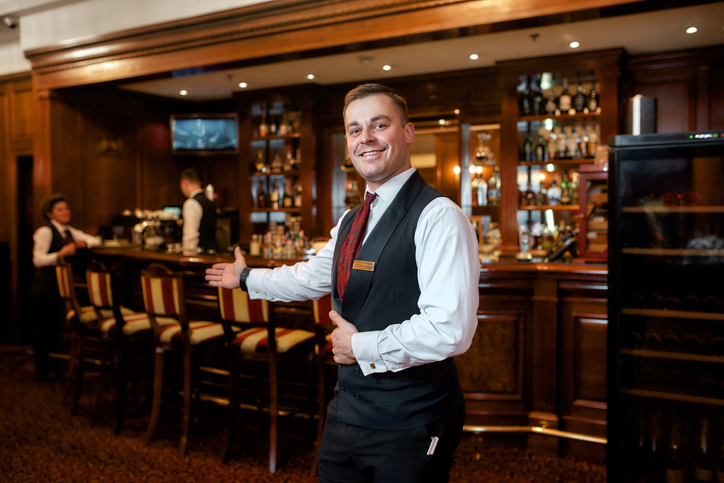
By Adam Mogelonsky, Larry Mogelonsky
Here’s a thought to get your head churning. When you think of ‘innovation’ do you only think about some shiny new technology or does your mind also include incremental process improvements or business model adaptations within established industries? A softer front for innovation is thus in F&B, with intrepid chefs and mixologists constantly tinkering with their own technologies to dazzle their patrons and push the foodservice industry into uncharted territory. It follows that hotels, as the incubators for some of the best restaurant concepts on the planet, are leading progenitors for this type of innovation.
Where are we going with this? In large part because of this innovation and differentiation, hotel restaurants and bars are key amenities and attractions for guests. However, what’s often missed in this operational conversation is how these F&B outlets can better serve other onsite profit centers beyond just the enhancement of a dining experience with more dining spend.
Hence, the next question we ponder is how guests learn about the plethora of services available at a hotel once they are onsite. Your first thought might be the front desk or the gamut of great technologies you’ve deployed to hone the prearrival engagement. Yes, all this matters, but sometimes guests don’t read the confirmation email, are ignoring your prearrival communications and are too ‘apped-out’ to want to download your hotel app. Meanwhile, front office teams are perennially overloaded as they juggle multiple tasks and try to keep the check-in line moving. Ergo, you must always stay cognizant of the ‘context’ of a particular guest.
Both of us are planners of the militant variety, mapping our hotel itineraries months in advance. Both of us work frenetically to achieve the hallowed ground of inbox zero every Friday. Others like to play it by ear and have 25,000 unread emails just sitting there. For people of this latter disposition, all your tech may be for naught because you misread their ‘context’ of wanting to be sold once onsite or after arrival and likely by a real person where the chat about the amenity or the experience is part of the fun of it all.
Newer tech pieces like contextual digital signage are helping address this challenge in a labor-light answer, but you still need every at-bat to get those hits in – that is, to maximize revenue per guest – with the cross-training of your server team a great way to build that ancillary spend. Now we get to the next problem: how do you motivate your bartenders, mixologists, and servers to care about anything other than the cuisine and beverages that will directly pad their own pockets via higher average guest covers and better tips?
The first answer has everything to do with culture and company policy. Have you built an organization where servers are part of the restaurant or the hotel? Are you taking the time to explain to them the ‘halo effect’? That is, from the guest’s point of view, experiences at the restaurant spill over onto the perception of the entire hotel. Are you incorporating hotel happenings into stand-up meetings for the server team or as part of team tasting and training sessions? You can also incentivize them by rewarding good team members with comped room nights, free spa treatments or gift shop vouchers so that they can speak from the heart about these amenities. Just a few ideas…
An important caveat here is for those properties that have third party-managed restaurants, likely in place to maintain a lower-cost operating model. In these cases, there is little you can do besides bringing this issue up with your management partner. And as strategic advisors, one of the big questions we have helped owners to answer on past consulting assignments is whether these third-party F&B outlets are serving the greater whole or not. That is, are owner profits ultimately suffering because the outsourced restaurant isn’t adequately representing the hotel or feeding business back to the rooms?
Next, there’s the power of technology, in this case, the bulletins, app-based checklists and blackboard training tools you have likely mandated as an adaptation to pandemic operations. All these tools can be used for ‘bite-sized learning’ or the insertion of tiny bits of information to remind your teams about your amenities and subtly nudge them to mention them in conversations with guests. The key here is to keep it simple and as brief as possible with your messaging.
The third key area pertains to all the tactics you can deploy to drive guests to the restaurant, knowing that the customer-staff interactions in that outlet will inevitably lead to more guest utilization of other amenities. Likely, you are already giving this your full attention, but it nevertheless deserves yet more of your time regarding such labor-light activations like app-based drinks or appetizers, F&B packaging that specifically highlights off-peak traffic to the restaurant and in-room personalized digital promotions.
In sum, it’s all about knowing what the trend is, then looking at how your various piece of tech can help you capitalize upon it without requiring more labor. Right now, the hotel bar is experiencing a revival while guests who are over-satiated by screens are reverting to the ‘old school’ method of asking a real person what they should do or where they should go. There are plenty of ways to make this work for your topline growth.


